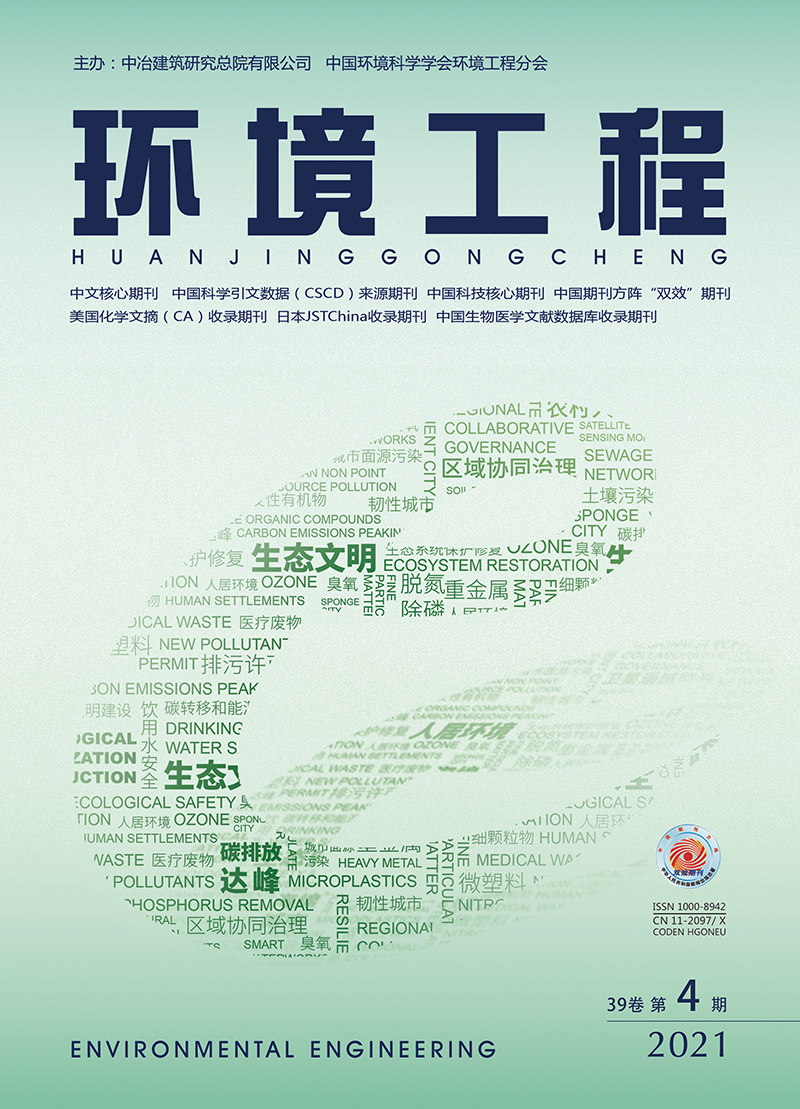| [1] |
中华人民共和国生态环境部.中国移动源环境管理年报2019[R].北京:中华人民共和国生态环境部, 2019.8.
|
| [2] |
张凯山,宋宁,第宝锋. 谈建立城市特征驾驶工况的必要性[C]//四川省环境科学学会二〇一一年学术年会论文集,2011.287-293.
|
| [3] |
USEPA. User's Guide to MOBILE6.1 and MOBILE6.2:Mobile Source Emission Factor Model[R]. EPA420-R-03-010, 2003.
|
| [4] |
California Air Resource Board. EMFAC User's Guide[M]. U.S.California:California Air Resource Board, 2002. 20-36.
|
| [5] |
NTZIACHRISTOS L, SAMARAS Z, et al. COPERT Ⅲ Computer program to calculate emissions from road transport, Methodology and emission factors (Version 2.1)[R]. Copenhagen:European Environmental Agency, 2000.
|
| [6] |
张兰怡,胡喜生,邱荣祖. 机动车尾气污染物排放模型研究综述[J]. 世界科技研究与发展, 2017,39(4):355-362.
|
| [7] |
陈琳,张凯山,张健,等. 城市特征驾驶工况建立及结果比较研究[J]. 环境科学与技术, 2014, 37(1):148-154.
|
| [8] |
WANG A J, GE Y S, TAN J W, et al. On-road pollutant emission and fuel consumption characteristics of buses in Beijing[J]. Journal of Environmental Sciences,2011, 23(3):419-426.
|
| [9] |
USEPA. User Guide for Motor Vehicle Emission Simulator MOVES2010(EPA-420-B-09-041)[R]. Washington D.C.:U.S. Environmental Protection Agency, 2012.
|
| [10] |
JIMENEZ-PALACIOS J L. Understanding and quantifying motor vehicle emissions with vehicle specific power and TILDAS remote sensing[D]. Cambridge:Massachusetts Institute of Technology, 1999. 54-56.
|
| [11] |
FREY H C, ROUPHAIL N M, UNAL A, et al. Emissions reduction through better traffic management:an empirical evaluation based upon on-road measurements[C]//North Carolina Department of Transportation. North Carolina:North Carolina State University, 2001.
|
| [12] |
UNAL A, FREY H C, ROUPHAIL N M. Quantification of highway vehicle emissions hot spots based upon on-board measurements[J]. Journal of the Air & Waste Management Association (1995), 2004, 54(2):130-140.
|
| [13] |
BECKWITH M, BATES E, GILLAH A, et al. NO2 hotspots:are we measuring in the right places?[J]. Atmospheric Environment:X, 2019, 2:100025.
|
| [14] |
LEWIS R J. An introduction to classification and regression tree (CART) analysis[A]. In:the 2000 Annual Meeting of the Society for Academic Emergency Medicine. California:Harbor-UCLA Medical Center, 2000.
|
| [15] |
LI Z, ZHANG K S, PANG K L, et al. A fuel-based approach for emission factor development for highway paving construction equipment in China[J]. Journal of the Air & Waste Management Association, 2016, 66(12):1214-1223.
|
| [16] |
ODURO S D, HA Q P, DUC H. Vehicular emissions prediction with CART-BMARS hybrid models[J]. Transportation Research Part D:Transport and Environment, 2016, 49:188-202.
|
| [17] |
AMIN T, BRYAN C P. Modeling multiple land use changes using ANN, CART and MARS:comparing tradeoffs in goodness of fit and explanatory power of data mining tools[J]. International Journal of Applied Earth Observation and Geoinformation, 2014, 28:102-116.
|
| [18] |
ZHANG S C. Cost-sensitive KNN classification[J]. Neurocomputing, 2020, 391:234-242.
|
| [19] |
DAS L, SIVARAM A, VENKATASUBRAMAANIAN V. Hidden representations in deep neural networks:Part 2. Regression problems[J]. Computers & Chemical Engineering, 2020, 139:106895.
|
| [20] |
XU X D, ABDUL A H M, GUENSLER R. A modal-based approach for estimating electric vehicle energy consumption in transportation networks[J]. Transportation Research Part D:Transport and Environment, 2019, 75:249-264.
|
| [21] |
CHEN L F, LIANG Z R, ZHANG X, et al. Characterizing particulate matter emissions from GDI and PFI vehicles under transient and cold start conditions[J]. Fuel, 2017, 189:131-140.
|
| [22] |
YU S, DONG G,LI L. Transient characteristics of emissions during engine start/stop operation employing a conventional gasoline engine for HEV application[J]. International Journal of Automotive Technology, 2008, 9:543-549.
|
| [23] |
YANG W D, ZHANG Q Y, WANG J L, et al, Emission characteristics and ozone formation potentials of VOCs from gasoline passenger cars at different driving modes[J]. Atmospheric Pollution Research, 2018, 9(5):804-813.
|
| [24] |
WANG Y C, HAO C X, GE Y S, et al. Fuel consumption and emission performance from light-duty conventional/hybrid-electric vehicles over different cycles and real driving tests[J]. Fuel, 2020, 278:118340.
|
| [25] |
钱芳. CNG/汽油双燃料出租车排放特性研究[D].南京:东南大学,2015.
|
| [26] |
CHONG H S, PARK Y, KWON S, et al. Analysis of real driving gaseous emissions from light-duty diesel vehicles[J]. Transportation Research Part D:Transport and Environment, 2018, 65:485-499.
|
| [27] |
李加强,葛蕴珊,何超,等.发动机工况与行驶挡位对轻型汽油车道路排放的影响[J].环境工程,2018,36(12):130-134
,154.
|
| [28] |
HE L Q, HU J N, YANG L H, et al. Real-world gaseous emissions of high-mileage taxi fleets in China[J]. Science of the Total Environment,2019,659:267-274.
|
| [29] |
付秉正,杨正军,尹航,等.轻型汽油车实际行驶污染物排放特性的研究[J].汽车工程,2017,39(4):376-380.
|


 Login
Login Register
Register E-alert
E-alert






 DownLoad:
DownLoad: